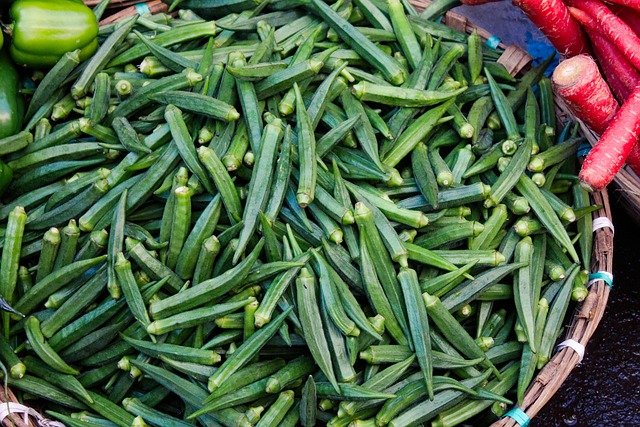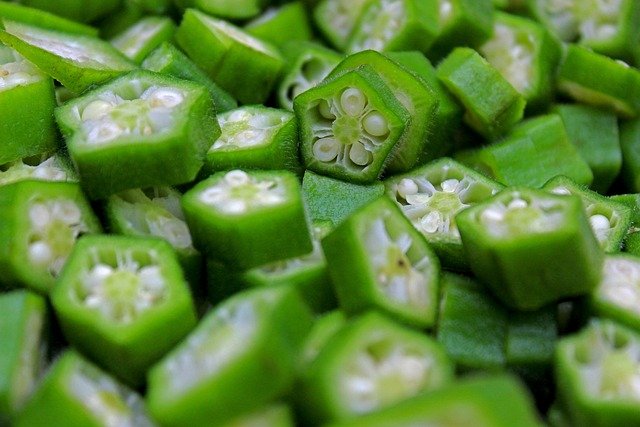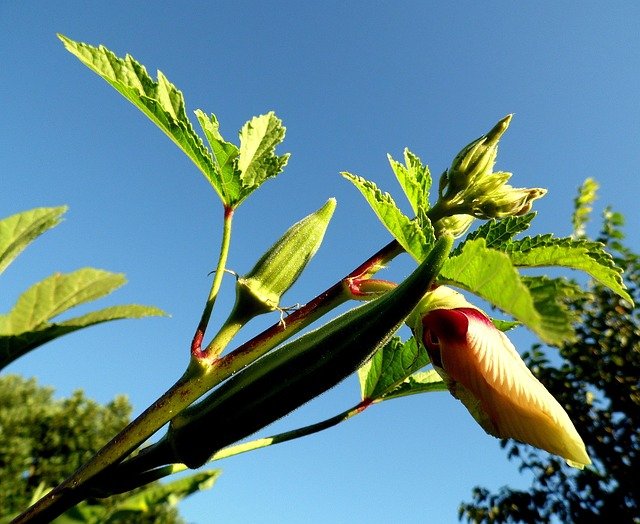Hello, Steemians I'm so grateful for this opportunity to share my thoughts with you all.
I want to discuss one of my favourite vegetable plants.
Okra is one of my favourite vegetable plants, I use it most in making soup, and okra soup is one of my best soups. It is a common traditional dish in my region, people use it most on occasions.
I would like to elaborate more on this vegetable plant, based on its value and benefits.
Okra is an herbaceous plant, which belongs to the Malvaceae family. It's an annual plant, meaning it is grown yearly and it completes its life cycle in one growing season. It was mostly grown in Africa and Asia, but the cultivation of the plant has now been adopted by many countries around the world.
Okra is cultivated mostly in the warm season, with a fafavorableemperature of 20 - 30⁰C and well-drained soil with a suitable pH level. Okra plants can resist and thrive in most climate conditions like drought, but production is mostly improves when exposed to consistent moisture.
Agricultural byproduct of Okra plants
Seeds: The seeds of okra can be refined into oil, it is also a good source of protein which can be used as feed supplements for livestock.
Stalk: The stalk of okra plants is a good source of fiber that can be used in industries for making ropes, paper, and other craft works.
Okra leaves: Okra leaves, just like the fruit are also edible and which be used in making soups and many other dishes.
Okra fruit (pods): The okra pods are the main edible part of the plant, which is used in food and also applicable in pharmaceuticals.
Composting: Composted okra byproducts can be used as a natural source of fertilizer in place of synthetic fertilizers.
Livestock feed: The leaves, seeds and stalks of okra are composed of various nutrients which can be used as feed supplements for livestock.
Industrial applications: Okra pods which are the edible part of the plant which is a source for extracting okra used in food, cosmetics and pharmaceuticals.
Paper production: The stalks of okra can be a source of wood pulp which can be used in producing paper.
Income generation: Utilization of agricultural by-products like leaves, seeds and stalks, can provide an extra income source for farmers.
Waste management: Making use of these okra byproducts reduces the risk of waste to the environment.
Job opportunity: Utilization of okra byproducts can be a source of employment for individuals in rural areas.
Lack of infrastructure and technology for processing okra byproducts can affect the utilization of the byproducts.
Research should be made to discover other unique uses and applications of okra byproducts and the provision of infrastructures and technologies for efficient utilization of okra byproducts.
Okra plants in my region, contribute a lot to the economy, fostering vast income generation and employment opportunities mostly in the rural settlements.
I will love to invite;
@imohmitch
@us-andrew
@precious9
Cc,
@hive-118902



https://x.com/Promisezella/status/1879661493761003927?t=63kp8-ZKNRVwvkEu4-TOEQ&s=19
Downvoting a post can decrease pending rewards and make it less visible. Common reasons:
Submit